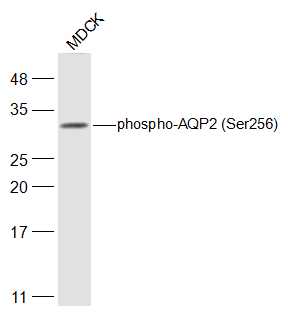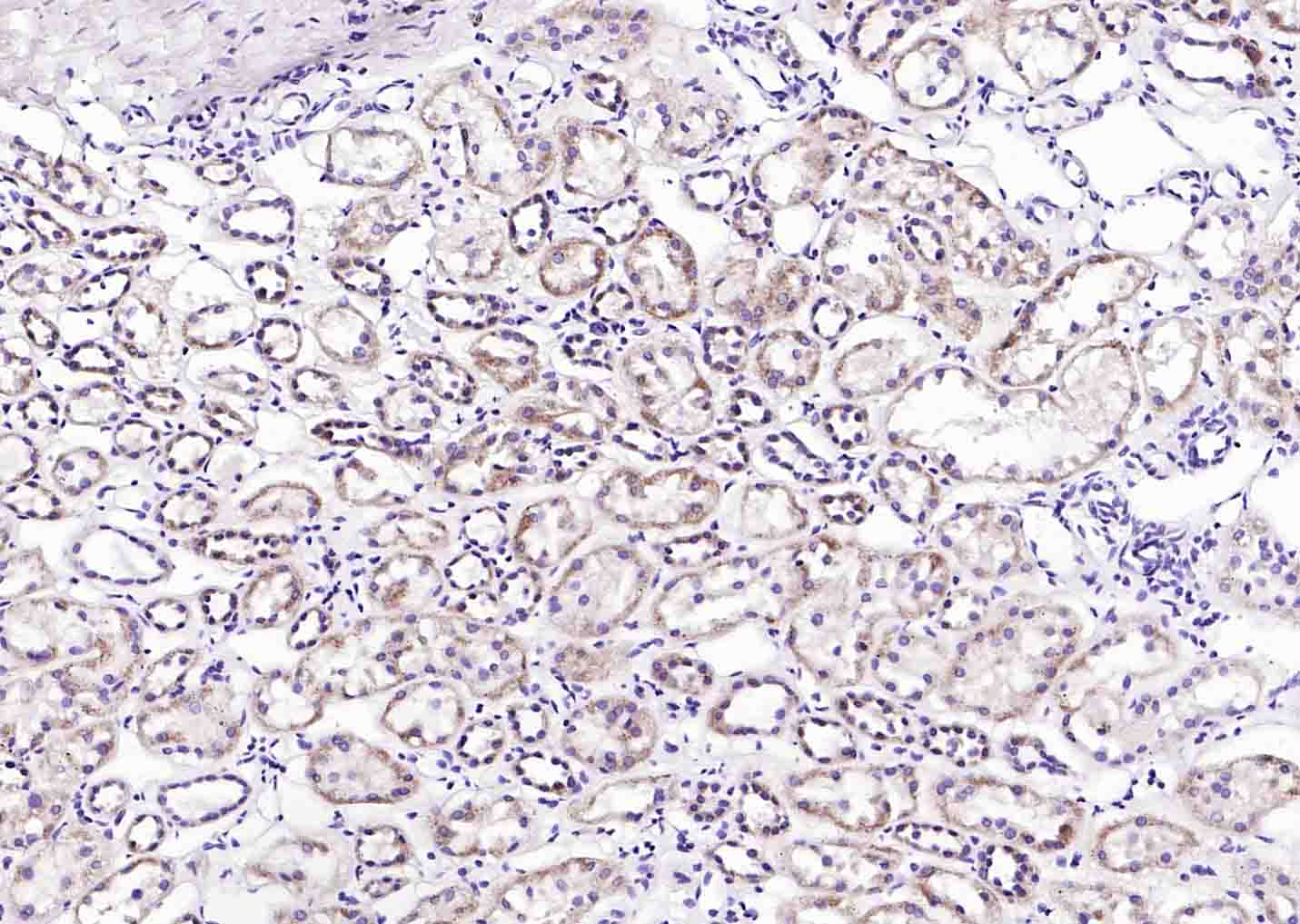
Rabbit Anti-phospho-AQP2 (Ser256)antibody
Aquaporin 2 (phospho S256); Aquaporin 2 (phospho Ser256); p-Aquaporin 2 (phospho S256); p-Aquaporin 2 (S256); ADH water channel; AQP 2; AQP CD; AQP2; AQPCD; Aquaporin 2 collecting duct; Aquaporin CD; Aquaporin2; Aquaporine 2; Collecting duct water channel
View History [Clear]
Details
Product Name phospho-AQP2 (Ser256) Chinese Name 磷酸化水Channel protein2抗体 Alias Aquaporin 2 (phospho S256); Aquaporin 2 (phospho Ser256); p-Aquaporin 2 (phospho S256); p-Aquaporin 2 (S256); ADH water channel; AQP 2; AQP CD; AQP2; AQPCD; Aquaporin 2 collecting duct; Aquaporin CD; Aquaporin2; Aquaporine 2; Collecting duct water channel protein; MGC34501; Water channel protein for renal collecting duct; WCH CD; WCHCD; AQP2_HUMAN. literatures Product Type Phosphorylated anti Research Area Tumour Cell biology Signal transduction Channel protein Cell adhesion molecule Immunogen Species Rabbit Clonality Polyclonal React Species Human, Dog, (predicted: Mouse, Rat, Chicken, Pig, Cow, Horse, Rabbit, Monkey, ) Applications WB=1:500-2000 ELISA=1:5000-10000 IHC-P=1:100-500 IHC-F=1:100-500 ICC=1:100-500 IF=1:100-500 (Paraffin sections need antigen repair)
not yet tested in other applications.
optimal dilutions/concentrations should be determined by the end user.Theoretical molecular weight 29kDa Cellular localization cytoplasmic The cell membrane Form Liquid Concentration 1mg/ml immunogen KLH conjugated synthesised phosphopeptide derived from human AQP2 around the phosphorylation site of Ser256: RQ(p-S)VE Lsotype IgG Purification affinity purified by Protein A Buffer Solution 0.01M TBS(pH7.4) with 1% BSA, 0.03% Proclin300 and 50% Glycerol. Storage Shipped at 4℃. Store at -20 °C for one year. Avoid repeated freeze/thaw cycles. Attention This product as supplied is intended for research use only, not for use in human, therapeutic or diagnostic applications. PubMed PubMed Product Detail Aquaporins (AQPs) are a large family of integral membrane water transport channel proteins that facilitate the transport of water through the cell membrane. This function is conserved in animals, plants and bacteria. Many isoforms of aquaporin have been identified in mammals, designated AQP0 through AQP10. Aquaporins are widely distributed and it is not uncommon for more than one type of AQP to be present in the same cell. Although most aquaporins are only permeable to water, AQP3, AQP7, AQP9 and one of the two AQP10 transcripts are also permeable to urea and glycerol. AQP2 is the only water channel that is activated by vasopressin to enhance water reabsorption in the kidney collecting duct. Aquaporins are involved in renal water absorption, generation of pulmonary secretions, lacrimation, and the secretion and reabsorption of cerebrospinal fluid and aqueous humor.
Function:
Forms a water-specific channel that provides the plasma membranes of renal collecting duct with high permeability to water, thereby permitting water to move in the direction of an osmotic gradient.
Subcellular Location:
Apical cell membrane. Cytoplasmic vesicle membrane. Shuttles from vesicles to the apical membrane.
Tissue Specificity:
Expressed in renal collecting tubules.
Post-translational modifications:
Ser-256 phosphorylation is necessary and sufficient for expression at the apical membrane. Endocytosis is not phosphorylation-dependent.
DISEASE:
Defects in AQP2 are the cause of diabetes insipidus nephrogenic autosomal (ANDI) [MIM:125800]; also known as diabetes insipidus nephrogenic type 2. ANDI is caused by the inability of the renal collecting ducts to absorb water in response to arginine vasopressin. It is characterized by excessive water drinking (polydypsia), excessive urine excretion (polyuria), persistent hypotonic urine, and hypokalemia. Inheritance can be autosomal dominant or recessive.
Similarity:
Belongs to the MIP/aquaporin (TC 1.A.8) family.
SWISS:
P41181
Gene ID:
359
Database links:Entrez Gene: 359 Human
Entrez Gene: 11827 Mouse
Omim: 107777 Human
SwissProt: P41181 Human
SwissProt: P56402 Mouse
Unigene: 130730 Human
Unigene: 20206 Mouse
Unigene: 90076 Rat
Product Picture
MDCK(Dog) Cell Lysate at 30 ug
Primary: Anti-phospho-AQP2 (Ser256) (SL12507R) at 1/500 dilution
Secondary: IRDye800CW Goat Anti-Rabbit IgG at 1/20000 dilution
Predicted band size: 29 kD
Observed band size: 29 kD
Paraformaldehyde-fixed, paraffin embedded (Human kidney); Antigen retrieval by boiling in sodium citrate buffer (pH6.0) for 15min; Block endogenous peroxidase by 3% hydrogen peroxide for 20 minutes; Blocking buffer (normal goat serum) at 37°C for 30min; Antibody incubation with (phospho-AQP2 (Ser256)) Polyclonal Antibody, Unconjugated (SL12507R) at 1:200 overnight at 4°C, followed by operating according to SP Kit(Rabbit) (sp-0023) instructionsand DAB staining.
Bought notes(bought amounts latest0)
No one bought this product
User Comment(Total0User Comment Num)
- No comment




 +86 571 56623320
+86 571 56623320
 +86 18668110335
+86 18668110335

